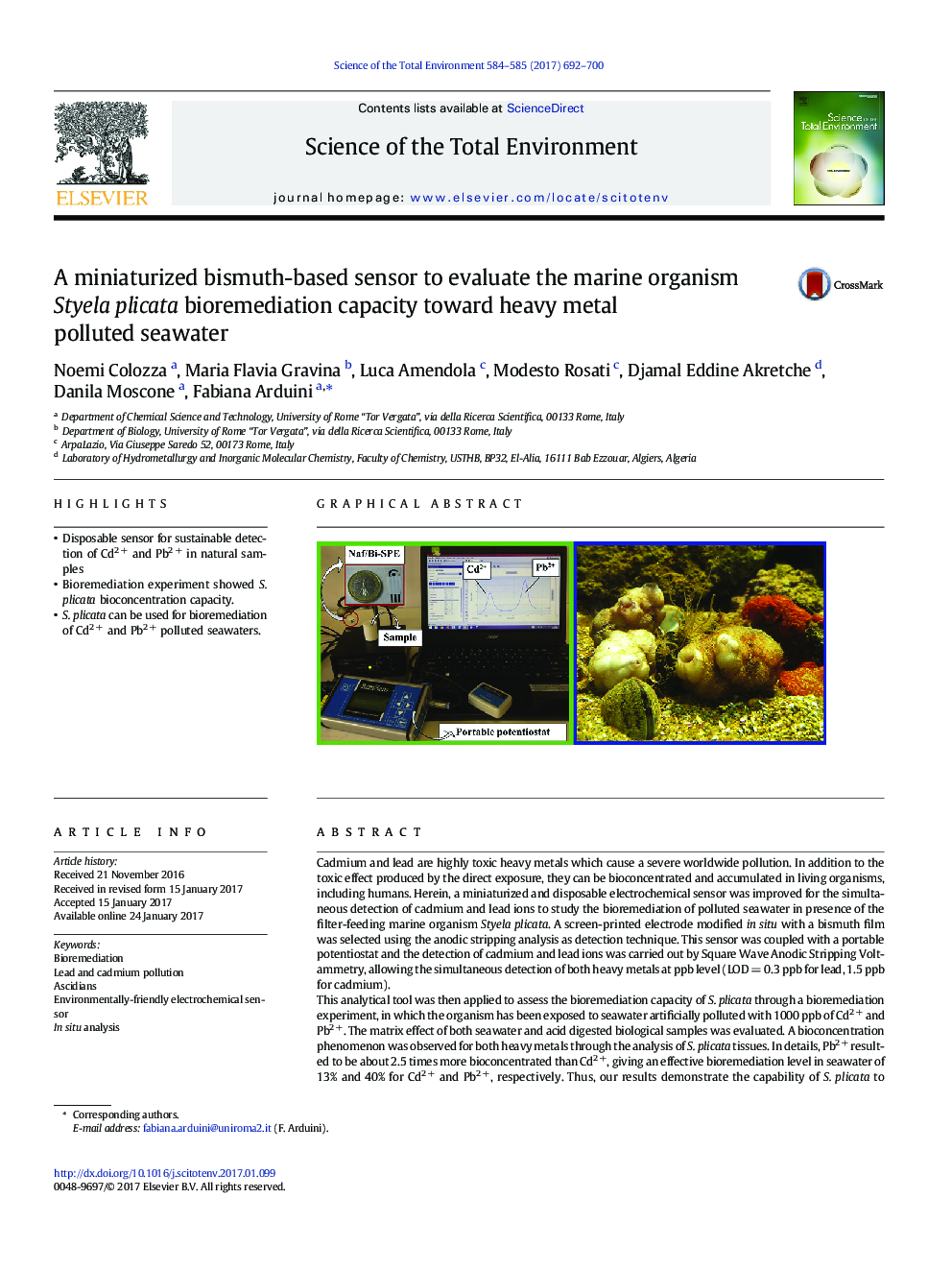| کد مقاله | کد نشریه | سال انتشار | مقاله انگلیسی | نسخه تمام متن |
|---|---|---|---|---|
| 5751910 | 1619708 | 2017 | 9 صفحه PDF | دانلود رایگان |

- Disposable sensor for sustainable detection of Cd2Â + and Pb2Â + in natural samples
- Bioremediation experiment showed S. plicata bioconcentration capacity.
- S. plicata can be used for bioremediation of Cd2Â + and Pb2Â + polluted seawaters.
Cadmium and lead are highly toxic heavy metals which cause a severe worldwide pollution. In addition to the toxic effect produced by the direct exposure, they can be bioconcentrated and accumulated in living organisms, including humans. Herein, a miniaturized and disposable electrochemical sensor was improved for the simultaneous detection of cadmium and lead ions to study the bioremediation of polluted seawater in presence of the filter-feeding marine organism Styela plicata. A screen-printed electrode modified in situ with a bismuth film was selected using the anodic stripping analysis as detection technique. This sensor was coupled with a portable potentiostat and the detection of cadmium and lead ions was carried out by Square Wave Anodic Stripping Voltammetry, allowing the simultaneous detection of both heavy metals at ppb level (LODÂ =Â 0.3Â ppb for lead, 1.5Â ppb for cadmium).This analytical tool was then applied to assess the bioremediation capacity of S. plicata through a bioremediation experiment, in which the organism has been exposed to seawater artificially polluted with 1000Â ppb of Cd2Â + and Pb2Â +. The matrix effect of both seawater and acid digested biological samples was evaluated. A bioconcentration phenomenon was observed for both heavy metals through the analysis of S. plicata tissues. In details, Pb2Â + resulted to be about 2.5 times more bioconcentrated than Cd2Â +, giving an effective bioremediation level in seawater of 13% and 40% for Cd2Â + and Pb2Â +, respectively. Thus, our results demonstrate the capability of S. plicata to bioremediate Cd2Â + and Pb2Â + polluted seawater as well as the suitability of the electrochemical sensor for contaminated marine environment monitoring and bioremediation evaluation.
267
Journal: Science of The Total Environment - Volumes 584â585, 15 April 2017, Pages 692-700